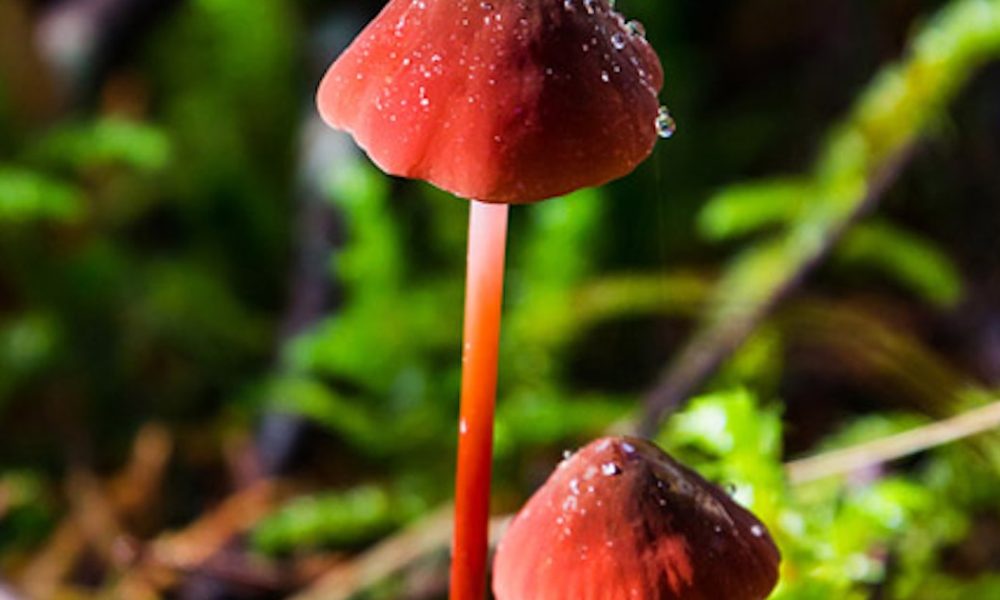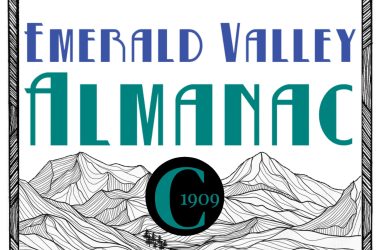 SU LIUDAHL-DRAGONFLY’S EYE PHOTOGRAPHY
SU LIUDAHL-DRAGONFLY’S EYE PHOTOGRAPHY
Warning: Please use common sense when it comes to mushroom hunting or anytime you are in the woods. Mushrooms are great to eat but you must use caution and common sense when consuming unknown foods from the wild. Many wild edibles have toxic and even deadly lookalikes and you could eat the wrong thing. It takes a good amount of research and actual fieldwork to know your mycology and herbology before you can just start picking wild edibles and eating them. Please be careful in the woods; wild animals are territorial and will attack if they feel threatened. Always go with more that one person and bring the proper tools, supplies and survival gear with you. I cannot stress this enough: be careful and use common sense!
Nature’s wild harvest
As this year’s morel mushroom season comes to an end here in the Pacific Northwest new hunting opportunities begin in a month as chanterelles begin to pop up from the ground in late July. So I thought, why focus only on morels when there is such a multitude of delectable treats out there in the woods of Oregon. So here I will talk about these rare and prized treats that can also fetch the avid hunter a good price from those culinary experts that use them in their cooking. I will talk about how you find them, where to look and what to watch out for when out hunting for them in the woods.
Hunting wild mushrooms
Before you just head on out into the woods with little but a bucket and a butter knife we should take a look at the types of materials you should have and what you should bring with you.
What to bring
Water – Always have bottled water or a canteen of fresh water with you. I keep bottles of water in the trunk of my vehicle as well. Hiking in the woods can be very physically taxing, especially when you are not used to that kind of physical activity. Dehydration is a killer and water will save your life.
Compass, maps or GPS – When out in the woods it is easy to get lost. Always bring a compass and have maps of the area you are in (you can get these types of terrain maps at any BLM office in your area). With your eyes pinned to the ground you can get lost easily. The forest canopy can make it easy to get turned around and you can lose your bearings real fast. Know where you are and travel in a group of people. Knowing how to use a compass, having maps or even better, having a GPS can save your life.
Pocket knife, small shovel or a three-pronged rake (truffle hunting) – Use a pocket knife to cut the shrooms from their stocks or base. You cut them just below the base of the cap and leave the stock. Small hand shovels or trawls can be used to dig out certain kinds of shrooms such as King Boletes. Three-pronged rakes are used when hunting truffles near the base of trees.
Mesh bags, wax paper, and paper with white and black lines for spore prints – Mesh bags are great because they allow for mushroom spores to drop as you trek through the forest back to your vehicle. It also allows for the fungi to breathe and not spoil like they do in buckets. Wax paper allows you to wrap your specimens up to keep them nice for the trip back to your vehicle. White and black lined paper can allow you to identify a mushroom by placing the cap of the shroom onto the paper and covering it in wax paper for about an hour. When you return, the shroom cap will have dropped the spores onto the paper showing the coloration and pattern of a print. With your field guide you can identify the shroom by this spore print in most cases. Use a field guide that tells or shows you about spore prints. If in doubt, though, throw it out!
Long-sleeved clothes and head cover – Long sleeves are a good idea when out in the forest because mushrooms grow in thickets and in deep brush. With all the nasty bugs like ticks and sharp sticks it is a good idea to remain covered. Wear boots or good footwear when out in the forest as well since you will be in heavy terrain.
Emergency kit with snakebite kit – Always have an emergency kit in your vehicle and one to carry with you. I have a backpack that I carry my emergency kit in. In the kit I have emergency blankets, a compass, maps, wound closure supplies, antiseptics, clean water, poison oak treatment, a snakebite kit, mosquito spray, pepper spray, dry matches and lighters, an LED light, a whistle and a rope. I know that seems like an awful lot to carry but it really isn’t; there is less than 10 pounds of material here and it could save a life. You can also bring energy bars, which is a good idea if you are going to be in the woods for hours on end like I am – just remember to carry out your trash!
Mushroom field guide – Having one of these books is essential when hunting wild mushrooms and it can help you identify the types of mushrooms you come across. There are many different species and many of them grow wild in the woods and many of them look alike. Having a field guide can help you find the mushrooms you may want to grab on your hunt! If it is your first time or you are not experienced and out alone for the first time hunting, I recommend you use one of these guides for sure. It is best to go with someone who knows what to look for and has mushroom-hunted before; you don’t want to risk your life on getting the wrong kind of shroom! Find a guide that has information on spore prints and that gives good details on markings and growth habitats.
Other stuff
Bells – Bells help animals know you are coming and they will run when they hear you. It is much better to scare a bear away at a distance than it is to walk up on one by accident.
Dogs – Dogs trained in identifying truffles can sniff out this treat since they have a strong smell. Dog activity can also discourage any unwanted wild animals from approaching you and keep you safe.
– – – – –
Find Sean Jankowski online at hubpages.com/@cow-flipper







